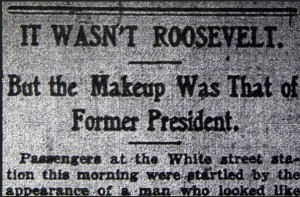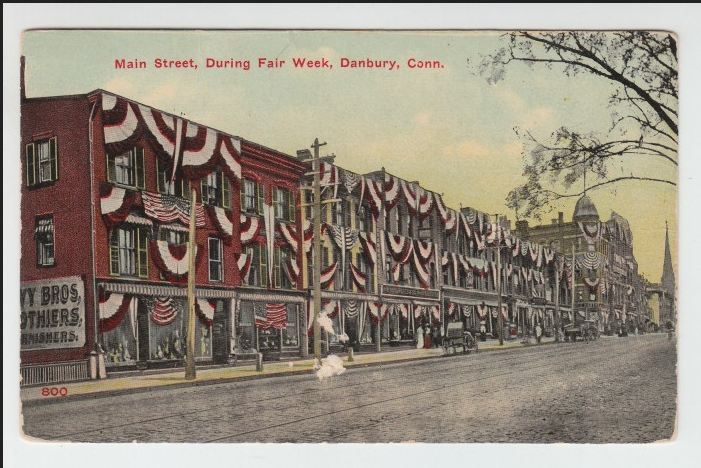By Diane Hassan for the CTPost.com
The origins of the Danbury Fair began in 1821 when the Fairfield Agricultural Society held gatherings in Elmwood Park on Main Street. The event gave farmers an opportunity to discuss farming methods and showcase the fruits of their labor. Hat manufacturers Rundle & White organized The Danbury Farmers & Manufacturers Society in 1869 and the new organization held its first fair in a “‘rough board, one-story building and a small tent borrowed from the Barnum & Bailey Circus” on the site of a new trotting track called Pleasure Park (located at the site of the present Danbury Fair Mall).
Beginning in the 1870s, the first week of October became known as Fair Week and Main Street was decorated for an annual kickoff parade.
The anticipation for the First Week of October could be felt all around town. And soon enough, the Danbury Agricultural Society was thinking up more clever ways to spread the news and draw even bigger crowds to the annual fair. The week prior to the fair’s opening in 1909, the Society engaged in a bit of 20th-century outdoor advertising of its own.
The headline reads: It Wasn’t Roosevelt

Detail from an article in the Danbury Evening News, September 27, 1909 – Danbury Museum & Historical Society
Here is a transcription of the full article, as published in the Danbury Evening News, September 27, 1909:
Passengers at the White street station this morning were startled by the appearance of a man thought to be ex-President Theo. Roosevelt. The man entered the station and rushed to the ticket office just before the 9:46 train arrived from Hartford. The station was filled with passengers waiting for the various trains about to arrive and his advent created no little stir.
The man was dressed in full suit of regulation khaki, with leggings and wore a large campaign hat turned up in front. His breast was decorated with medals and insignia of rank in the regular army and about his waist was a cartridge belt, a big government Colt’s revolver hanging at his left hip. His mustache was trimmed short and the large eye glasses, to which a black silk cord was attached, gave him the earmarks of the famous hunter now in Africa.
“Hully gee, here comes Roosevelt,” said the paper boy in the station as he dug his elbow in the ribs of a bootblack standing by him to attract the latter’s attention.” He’s de bega da hunt,” replied the bootblack as he gazed in silence at the imposing personage.
The stranger would have no doubt been the recipient of many honors in one form or another had he not turned his back to the gazing passengers when he stopped at the window of the ticket office. When he did this it was all off, the secret was out. Across his back on a sheet of oil cloth, was painted a legend that told all who read that the Danbury Fair would open next week. The man who so closely resembles the former president is a Mr. Terry, of Bridgeport, who has been engaged by the Danbury Agricultural Society to assist in the outdoor publicity.
Diane Hassan is an independent researcher, genealogist and writer currently working as a Research Specialist for the Danbury Museum & Historical Society.
© CTPost.com. All rights reserved. This article is excerpted and originally appeared on Archive Archaeology










